14 Common Soup Mistakes You Might Be Making
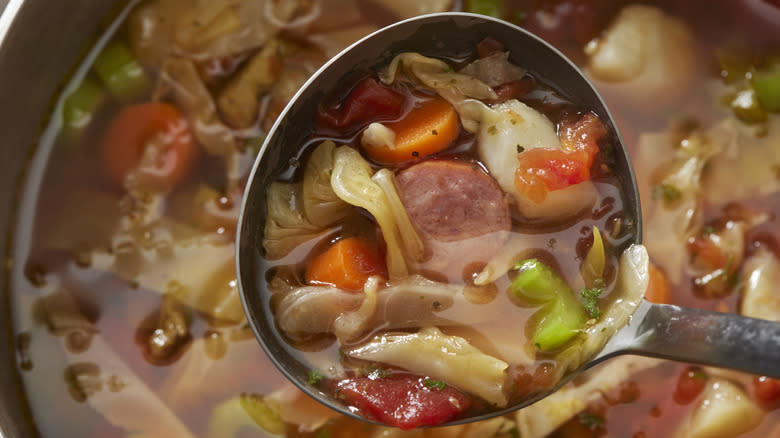
Soup is a staple food in virtually every national cuisine around the globe, and it's been around for longer than you might think. One of the first known forms of food preparation, ancient soup bowls dating from up to 20,000 B.C. have been found in China, with the dish originally made using heated rocks to create early forms of broth. As history tumbled on, more defined soup recipes started to form across Europe and Asia, while home cooks mastered the act of throwing a bunch of ingredients in a pot and making a delicious liquid-based meal from it -- a practice that continues to this day.
So, with such an incredible history and all we know about it, why is soup still so tricky to perfect? While it's not difficult to make a passable soup, too often, the homemade versions will have an underpowered flavor or be full of mushy and unsatisfying vegetables. There can also be a temptation to try and bolster the flavor of soup with salt or sodium-filled ingredients, leaving you with something virtually inedible. But not anymore. We put together a collection of the biggest mistakes people usually make when it comes to soup to prevent you from ruining your meal.
Read more: Canned Soups You Should And Shouldn't Buy
Forgetting About Your Fats
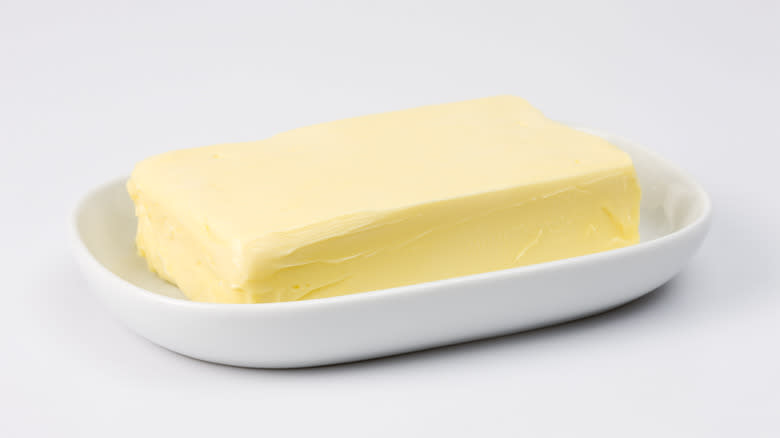
Soup is often championed as a food that can be low in fat yet still delicious. While that can sometimes be the case, this can often lead to people skimping too much on the fat in their soups, leading to a flat and lifeless meal. Fat serves to activate our taste buds and somewhat works as a taste in itself, thereby serving to round out a meal's flavor and underlining the other notes in our food. This is true even when it comes to liquid-heavy meals like soup, where fat doesn't work so much as a lubricant as it does as a flavor addition.
Fat also contributes to a better mouthfeel in foods, and crucially, it can also have an effect on satiety, making meals keep you fuller for longer. The best part is that you can add fat at pretty much any stage of the cooking process with soup, and it will still have a positive effect on your meal. Add it at the beginning to sauté your vegetables properly, or finish your bowl off with a garnish of drizzled olive oil or a pat of butter. Doing this allows you to taste the full flavor of the fat and gives your soup an extra silkiness.
Not Adding In A Thickener
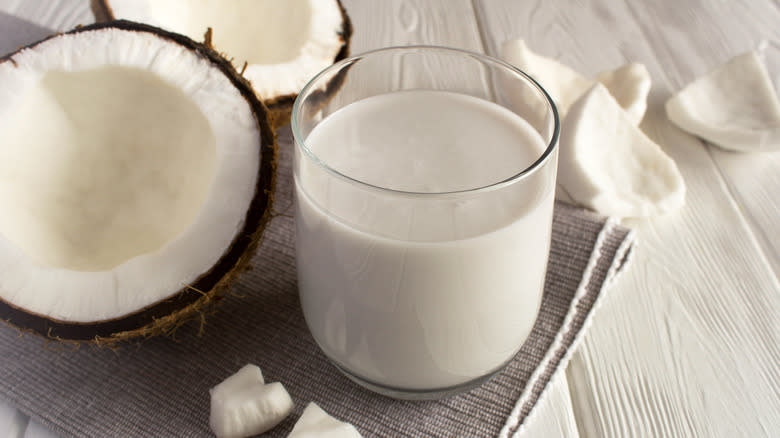
One of the greatest tragedies that we can think of is a soup that's too watery. And this can often happen if you're not thinking about how to thicken it. While soup can often be thickened simply by simmering it on the stove for long enough or by the ingredients in it releasing starch to provide body, oftentimes, this may not be enough and may result in you overcooking things. Adding a thickener to your soup, however, is a quick way to give it density without intensifying its flavor too much.
There are many easy ways to thicken your next soup, but our favorite method is using cornstarch or flour slurry. These starch-heavy ingredients serve to create bulk in your soup without changing its flavor. You can make an easy flour or cornstarch slurry by mixing a few teaspoons with water and then pouring it into the hot broth. This will prevent the dry ingredients from clumping together in your liquid. Try mixing in some coconut milk for a vegan thickener that adds fat and flavor. Alternatively, you could also blitz up some stale bread or mash up some boiled potatoes and stir them through for near-instant thickness.
Turning Your Heat Up Too High
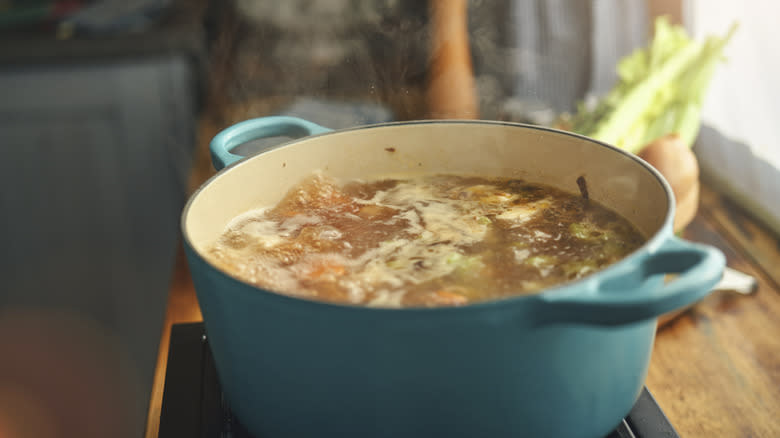
Soups should ideally be cooked on a low simmer, but this, of course, takes time. And if you're in a hurry or are feeling hungry, the temptation can be to speed things up by turning up the heat. However, this is a surefire way to ruin your soup. Boiling your soup, instead of simmering it, will quickly cause your vegetables to overcook, making them mushy instead of tender. Any protein you add can also quickly toughen up and become dry when boiled due to the protein fibers constricting and pushing out the meat's juices.
Therefore, you should always simmer your soup on low heat, keeping it barely bubbling until it's ready to serve. Make sure to keep an eye on it, especially if you're cooking it with a lid on, as heat can quickly build up due to the trapped steam and moisture. You can also avoid your vegetables becoming overcooked by making sure everything is chopped to the same size. This will prevent some of them from cooking earlier than others and getting a ruined texture.
Forgetting To Sauté Your Ingredients
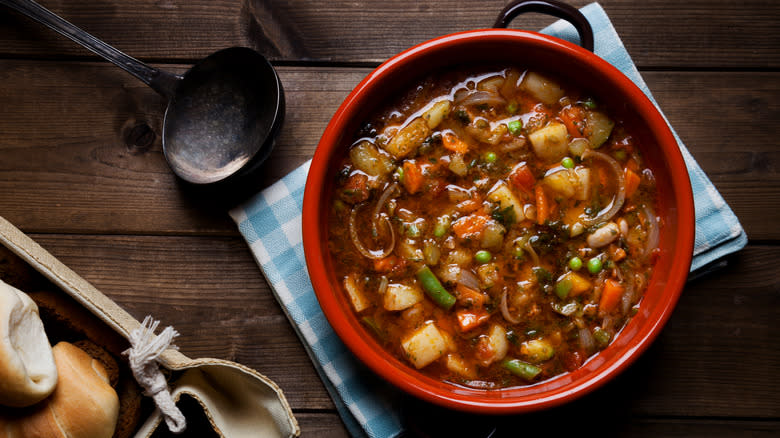
As soup is cooked by throwing everything into a pot and simmering it, it can feel a bit pointless to brown your ingredients first. But fail to do so, and you'll end up with something utterly tasteless. Sautéeing vegetables and other ingredients before you add liquid is crucial for developing your food's flavor. Giving them access to direct dry heat through frying them allows the Maillard reaction to occur, giving all your ingredients a browned surface with a deeper flavor and unlocking sweet and savory flavor notes in vegetables like onions, peppers, and garlic.
Sautéeing vegetables also helps to keep them firm when they're subsequently simmered by locking in their crunchy texture. As well as this, sautéeing vegetables can also help to preserve their color. It's also a good way of ensuring that any fats that you're adding are well incorporated into your soup by coating your vegetables thoroughly when sautéeing instead of pouring them in afterward. And if you're using a thickener like flour, adding it in at the sautéeing stage can also prevent it from clumping up if it's thrown in later.
Adding In Your Spices At The End
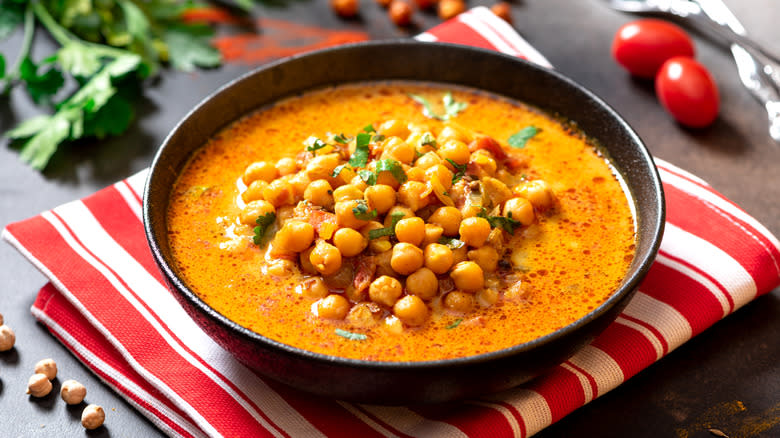
If you want to make soup like a professional chef, you're going to need some spices. Spices, herbs, and other aromatics provide an irreplaceable element to soups, imbuing them with complexity and depth of flavor and preventing them from becoming bland. However, when exactly you add your spices is crucial, particularly if you're working with ground ones. If you're putting ground spices in at the end of the process, not only are you not giving them the time they need to unlock their flavors by releasing their natural oils, but you also run the risk of them clumping up in your broth.
Instead, you should always add your spices at the beginning of your cooking process. If you're using whole spices, throw them in as early as possible to give their flavors a chance to develop and the spices time to toast. Ground spices should always be added before you add your liquid, and give some time to fry. However, make sure you're not adding them too early. Because ground spices are pretty fine, they have a tendency to burn if exposed to dry heat for too long. It's best to mix them into your vegetables and protein a minute or two before adding your liquid.
Over-Salting Your Soup
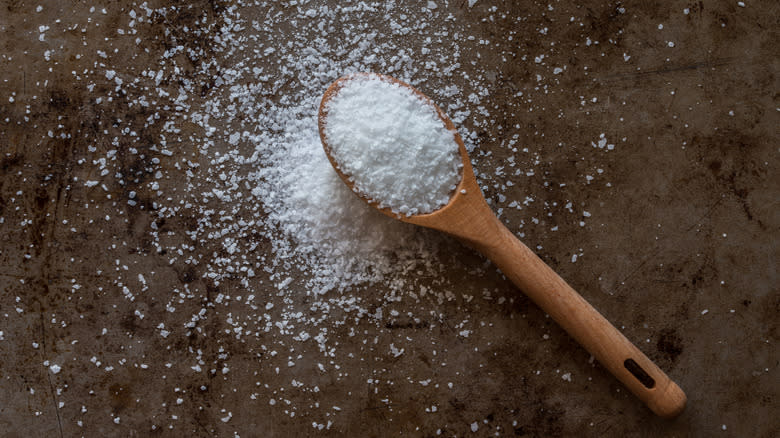
One of the worst things that can happen to a soup is it becoming too salty. Salt is, of course, a key flavor component of soup, and an ample amount is usually required to marry all of your ingredients together and stop your meal from being flat. But adding just one extra pinch can tip the balance and make your meal unpalatable. Soup can also quickly become too salty by adding extra ingredients that you're not using primarily for salt but which can contain high levels of sodium, like Worcestershire sauce, hot sauce, or spice mixes.
Unfortunately, the solution isn't as simple as just adding extra water, as this can throw the balance off for all of your other ingredients. Instead, you can fix over-salty soup with a simple potato hack. Raw potatoes, as well as other raw starchy vegetables, will absorb salt as they cook, essentially working as a sponge for excess sodium. Simply peel a potato and place it in your soup for about half an hour while on a gentle simmer before pulling it out. Make sure you do a taste test afterward to assess the seasoning levels and make any necessary adjustments.
Assuming You Always Need To Use Broth
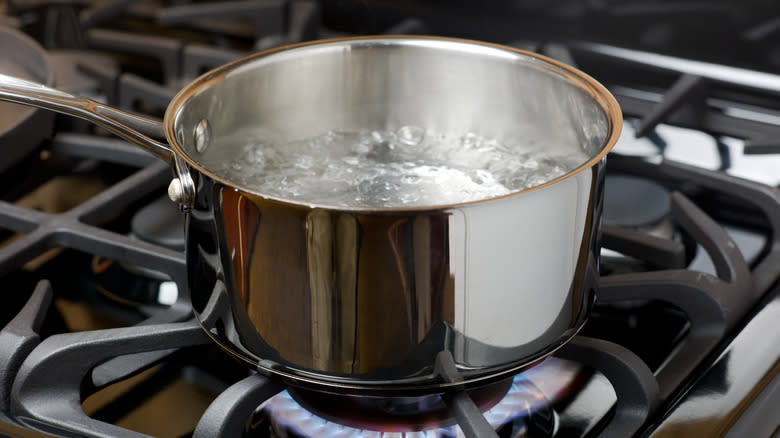
Using a pre-made broth or stock, or one you've made from scratch, is a quick way to give soup loads of additional flavor. But if you've always assumed that you need it to make the best soup, you're mistaken. Soups can be just as delicious if you're using regular water as the base of your cooking liquid, and doing so allows for a more gently-flavored dish that contains the taste of your ingredients more fully.
Using water is also, of course, a big money-saver. While stock cubes don't cost much, fancied store-bought stocks and broths can be fairly pricey, And you may find that they don't actually add that much flavor at all. If you're making your own stock or broth, it can also turn what should be a relatively quick meal into something that takes hours to prepare. Additionally, relying on a store-bought broth or stock can result in you adding significant levels of sodium to the soup as well as herb or spice combinations that you may not love for your chosen recipe, whereas using water allows you to control precisely how much salt you're putting into your meal.
Skipping The Acid
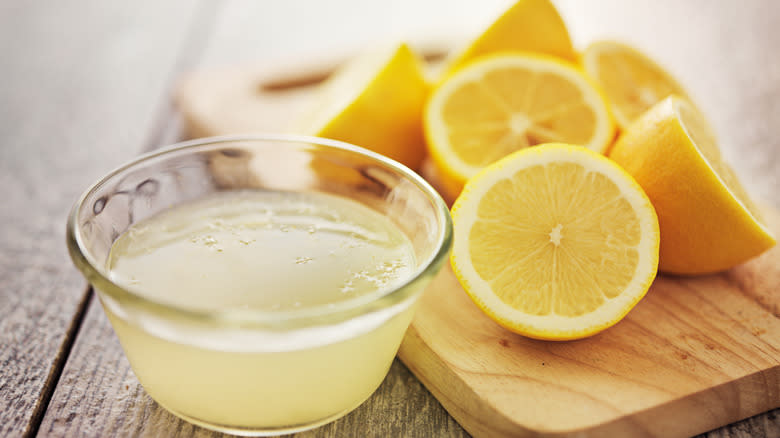
Acid is often forgotten about as a flavor component in soup, and we can understand why. Soup is, by its very nature, a cozy, comforting dish, and astringent flavors from vinegar and lemon juice don't tend to be associated with that kind of wholesomeness. But if you're foregoing acid entirely in your soup, you should be prepared for something pretty boring. Acid adds sourness to soup, one of the five main taste sensations humans have, and this sourness can help to balance out heat, saltiness, and sweetness. Acid can also work to underpin other savory flavors in soup and give everything a refreshing sense of sharpness.
While some vegetables, like tomatoes, can add natural acidity, if you're working with more alkaline vegetables like celery or spinach, you may need some additional help. Generally, a simple squeeze of lemon juice or a dash of white vinegar will go well with most flavor profiles and can be added at any point in the meal. If your soup contains dairy, you could also consider adding one with a lower pH level, like sour cream or buttermilk. Bear in mind, too, that acid added just before the soup is served or squeezed directly into the bowl will usually taste brighter and sharper.
Cooking Your Pasta Entirely In Your Soup
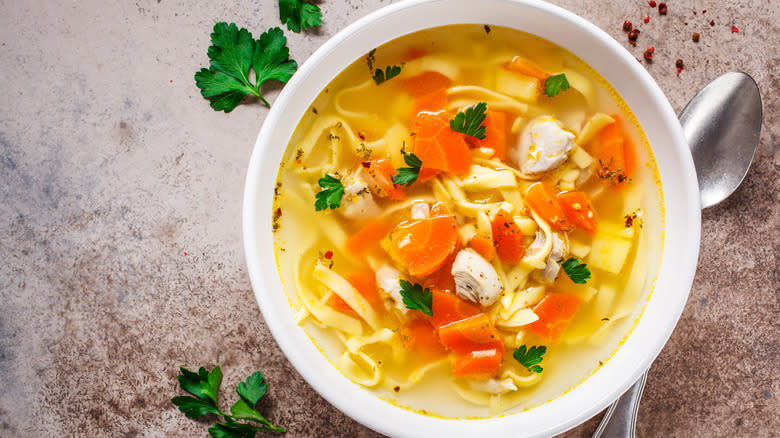
Soup is the perfect vehicle for pasta and noodles, as well as grains like rice or pearl barley. Including a carbohydrate element allows your soup to be more filling and more energizing, as well as arguably more comforting. But pasta and other grains are starch-heavy ingredients, and when you cook them, they release starch. If you're not careful, this starch will make your soup too thick and gloopy and disrupt the balance of your other ingredients. It will also change the color of your liquid, giving it a cloudiness that may not be ideal for recipes that aim for a clear broth.
Cooking pasta directly into soup also limits the amount of control you have with it – and if you add it too early, you may end up overcooking it and causing it to disintegrate. Rather than have this happen, the smarter thing to do is to partly cook it before adding it to your soup to finish it off, just before it's ready to serve. You should cook your pasta until it's about three-quarters of the way done, with a very al dente bite. When you add it to the soup, it will absorb the flavors of the broth in the last few minutes of cooking time while remaining firm in the bowl.
Adding Your Tomatoes At The Start
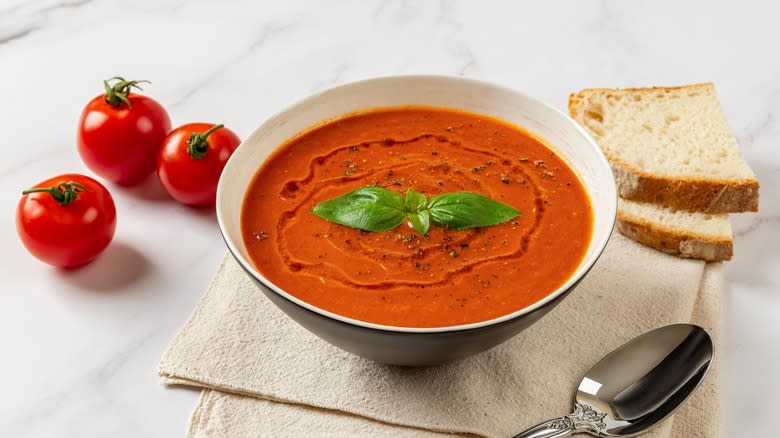
Tomatoes are an ingredient in countless soups; in some, like the ever-popular cream of tomato, they're the prominent flavor. But for soups that contain tomato as part of a larger flavor profile, like minestrone or chili soups, adding them at the beginning of the process is a surefire way to ruin them.
Tomatoes are acidic, with a pH level of around 4 to 4.5, depending on the type you're using. This pH level adds sourness and brightness to the soup, but it also lowers the overall pH level of the pot. When mixtures are more acidic, they interfere with the cooking process of other ingredients, like beans, stopping them from softening as well.
Cooking tomatoes for too long can also break down their natural vitamin C levels, meaning that your soup is less nutritious overall. To counteract all this, simply add your tomatoes later on in the cooking process, early enough so that they soften and cook down but not too early that they make everything tart. Usually, 20 minutes will be more than enough time to fully cook tomatoes and develop their flavors, and you may need even less time than this if your tomatoes are chopped into particularly small pieces.
Opting Out Of Caramelizing Your Onions
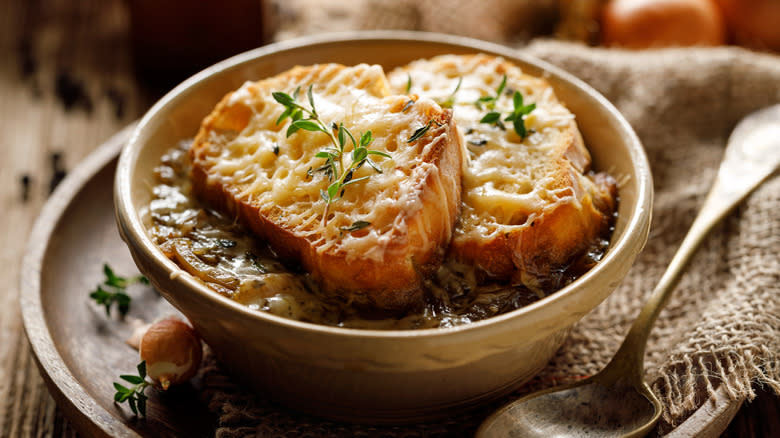
Caramelizing onions can feel like a real chore. The process can take 20 minutes or more of slow, gentle cooking, which can add a significant amount of cooking time to your soup recipe. But skipping the caramelizing process and opting to sweat them instead means that you miss out on a huge amount of flavor.
Caramelizing onions develops and draws out their natural sugars, creating an intense, complex flavor from the vegetable and neutralizing its sharp, pungent tones. By caramelizing them, you achieve a whole new layer of depth in your soup, giving it a savory-sweet undertone that makes everything taste more rich. Skipping the caramelization of onions will make your soup worse in most recipes, but it's particularly bad form when making French onion soup, which relies on the onions as its key flavor note. It's also worth noting that the longer you caramelize your onions, the more flavor will unlock. If you have the time, try cooking your onions for longer than the standard 20 minutes to test how much flavor you can extract from them and further deepen your soup's taste.
Puréeing Your Soup In A Blender
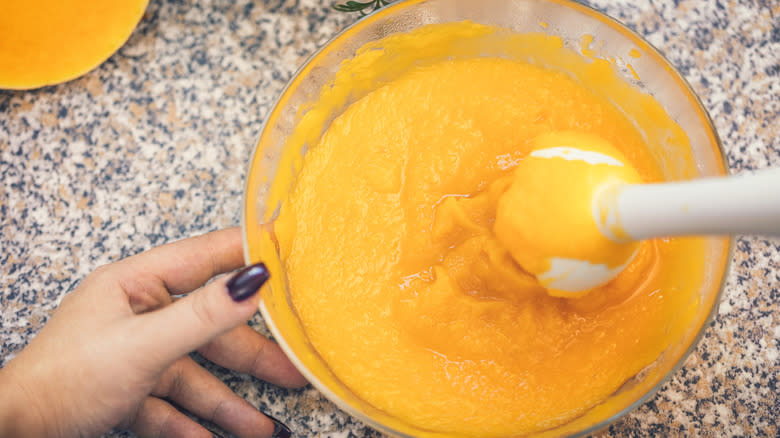
If you like your soup smooth, puréeing it is essential. Puréeing soup allows you to smooth out your dish in mere seconds, without having to simmer your vegetables excessively to cook them down, keeping their vegetal and bright flavor. However, although pouring it into a blender may seem logical, doing so is both cumbersome and dangerous. If you pour hot liquid into a blender and place a lid on top, its steam will create a large amount of pressure quickly. When you come to blend it, that steam will increase rapidly, which causes your soup to explode all over your kitchen.
This will not only create a mess, but it's also a serious safety hazard. If using a regular blender is your only option, it's vital to allow your soup to cool enough before blending to ensure that it won't be harmful if it splashes on bare skin. You should also work in batches with your soup, to limit steam build-up. In reality, though, the best thing to do is avoid using a countertop blender entirely and opt for a stick blender instead. These blenders can be inserted directly into your pot, preventing you from having to try and pour the whole thing out and take only a little more time than a regular blender.
Forgetting Your Umami Flavor Notes
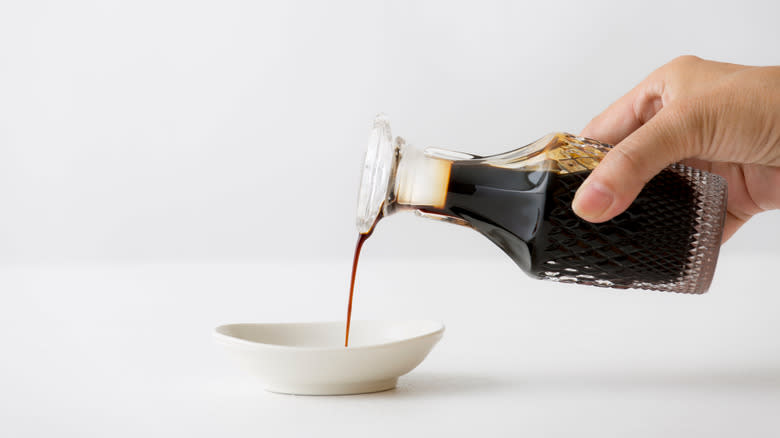
Few flavors hit the spot like umami does. Also known as savoriness, this core taste gives food a meaty, rich, dense flavor and rounds out both meat-based and plant-based dishes alike. But when it comes to soup, umami can be trickier to achieve. This is particularly the case when it comes to vegetable-based soups, which can be lacking in savoriness. People often try to rectify this by adding more salt instead of reaching for umami sources, which then leaves the food briny.
However, adding an umami boost to soup is simpler than you might think. Certain vegetables, like tomatoes and mushrooms, are naturally high in the glutamates that activate umami tastes, with garlic another key source. If you've added these already and you're still finding that your food tastes flat, try reaching for some soy sauce or Worcestershire sauce, both of which are umami-rich. Parmesan cheese is also a source of umami, and to extract its flavor effectively, you can simmer a parmesan rind directly into your broth. Stirring in some miso paste is also a great way to add some instant umami, and as most pastes are vegan, they'll fit into most dietary plans.
Skipping A Garnish
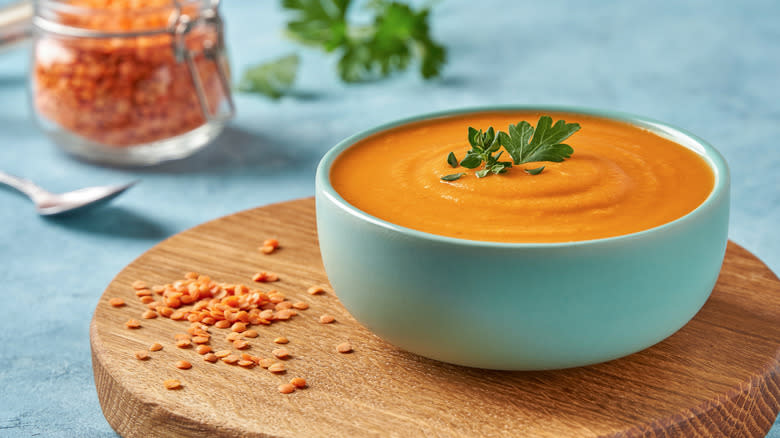
Soups are meant to be rustic and comforting, but there's no reason why garnishes can't go hand in hand with those traits. Garnishes are often skipped due to people deeming them unnecessary, but they can add crucial extra flavor to your soup, as well as a much-needed texture contrast. Using garlic croutons, for example, gives your soup a pop of umami while simultaneously adding a crunchy element, which is often lacking. A sprinkling of chopped parsley or cilantro, on the other hand, provides freshness and brightness, which pairs well with the deeper flavors of cooked vegetables or adds contrast to savory, meat-based soups.
When choosing a garnish, be mindful of the central flavors of your soup, and pick something that fits in with this. Vegetable chips work particularly well for multi-vegetable soups, adding crispiness while remaining in the taste world of the main dish. For a cream of broccoli soup, try using a small sprinkle of broccoli florets, perhaps blanching them first to brighten their color. Cream of mushroom soup, meanwhile, works very well with a garnish of sautéed mushrooms, which highlights the meal's flavors.
Read the original article on Daily Meal.

